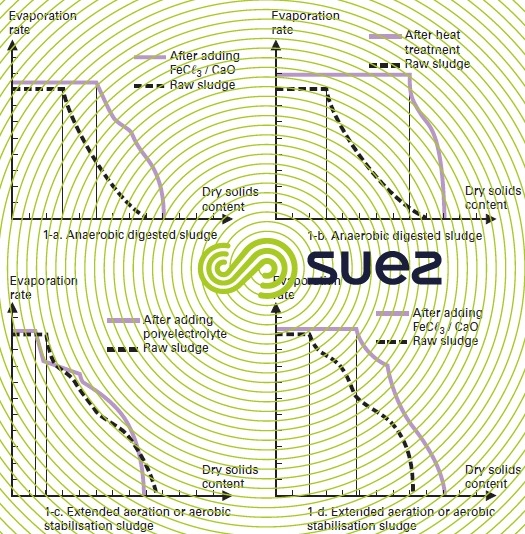sludge conditioning
Reading time:Although some sludge will «flocculate naturally» (e.g. activated sludge) or be delivered by the flocculation treatment stage (e.g. hydroxide sludge), it still has too high a resistance to filtration and too high a compressibility factor to guarantee proper water/matter separation and make it possible to use the various dewatering units. Therefore, the «sludge colloidal cohesion has to be broken down» first and the size of its component particles artificially increased.
This is the purpose of conditioning, a step that uses chemical type processes (adding mineral reagents or synthetic polymers) and, occasionally, physical type processes (heat).
Therefore, adequate sludge conditioning forms the basis of satisfactory dewatering unit operation: it is used to attain the objectives set in terms of final dry solids content, recovery and operating costs.
Depending on the type of conditioning used, free water, and even a proportion of the bound water, can be released from the sludge; measuring the activity of the water (aw) in the sludge will provide information on its availability and, therefore on the greater or lesser ease with which it can be extracted from the suspended solids matrix (the aw ranges from 0 to 1 and an aw equal to 1 refers to 100% water that is free and available).
Figure 13 illustrates the influence of conditioning on the «proportion» of free water that can easily be eliminated. The thermal gravimetric method used to measure the effect of a given conditioner is relatively simple to apply: the sludge is placed in a heated container, maintained at a constant humidity and the rate at which water evaporates in time is measured. The curves plotted allow us to differentiate between water that can easily be eliminated (free water and constant evaporation rate) and water that is chemically or physically bound.
Of the various processes used, heat conditioning (figure 13-1b) is by far the most efficient to reduce the hydrophilic force of the particules (increased aw for an identical initial water content). Chemical flocculation that uses mineral electrolytes (especially lime and metal salts) also reduces, but to a lower extent, the amount of bound water (figure 13-1a, 1d).The use of polyelectrolytes, however, only induces a slight drop in this bound water level (figure 13-1c) and may even increase it. Consequently, the type of conditioning used will affect the dry solids content of the sediment obtained.



Bookmark tool
Click on the bookmark tool, highlight the last read paragraph to continue your reading later












